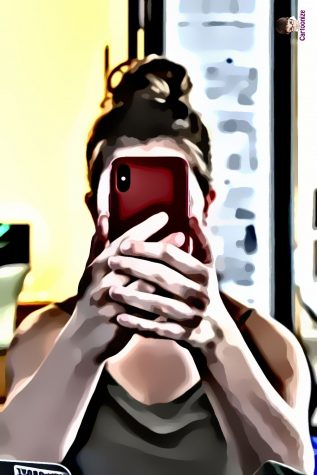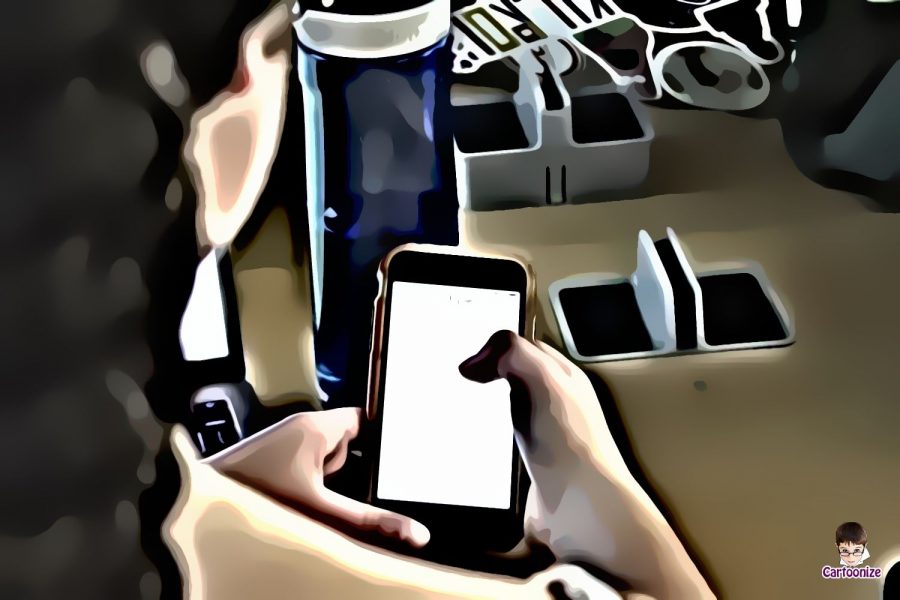Are detoxes toxic? The effectiveness of social media detoxing
February 16, 2019
A 2018 Pew Research Center study found that 45 percent of U.S. teens describe their internet usage as almost constant. For junior Caitlin Kulperger, however, her entire sophomore year was a little different from the picture this statistic paints. After noticing that she was only using platforms such as Snapchat and Instagram to waste time, she decided to delete the apps for a year. In that time, she found she had more free time and a clearer mindset.
“I wasn’t using social media as much and it wasn’t something that piqued my interest anymore. I just kind of felt like if I’m really not using it, it’s just taking up space on my phone,” Kulperger said.
These types of social media breaks, or “detoxes,” are a growing trend. According to a 2018 report by UK communications regulator Ofcom, 34 percent of consumers took some form of a break from the internet last year, with those aged 16 to 24 being the age group with the largest portion of detoxers. According to a recent Bark survey, 52 percent of students self-reported that they have tried a social media detox for five days or more. Both trends and personal experiences, however, give conflicting answers on whether they are actually effective in the long term.
Though there were some times when external societal pressures made Kulperger want to abandon the cleanse, she found that the experience of a year-long social media detox gave her insight into whether the platforms actually brought her happiness or not.
“The only times that I would really notice I didn’t have [social media] was when someone would talk about something they saw on a Snapchat story, or they would talk about something they sent me that I obviously couldn’t see,” Kulperger said. “Otherwise it felt kind of nice to not be worried about notifications from Snapchat or about what’s happening with other people.”

While Kulperger looked to detoxing to see how it could affect her mentally, senior Bella Botas looked to detoxing to help her with time management. Time management was one of the main reasons the detox trend attracted Botas, who deleted all social media for a few days while finishing her college applications this past fall.
“I already procrastinate a lot, so just having the option of Instagram or Snapchat wasn’t good. Deleting it made it so I had to work on my homework or college [applications],” Botas said.
Deleting social media freed up enough time for Botas to fully focus on her applications. This newfound free time was something Kulperger noticed as well. Before starting the detox, she recalled regularly finding herself holed up in her room as opposed to exploring her interests in the real world.
“I noticed I wasn’t sitting in my room on my phone for an hour anymore,” Kulperger said. “If I had nothing to really do on my phone I would go and really focus on my homework or really focus on actually reading or going outside… or having time to just sit down with my family and talk with them… so [it] was just really interesting to have that time to be present with myself.”
Although these types of cold-turkey quits can be beneficial for individuals, they do not seem to produce long-lasting results for the vast majority of participants. According to the Bark survey, only 53 percent of those who attempted a detox for five days or more found that it helped cut down their social media usage after finishing the detox.
According to Botas, she found that although the detox helped eliminate social media use during the time she’d alloted for it, it didn’t have a significant impact on her usage after she re-downloaded the apps to her phone.
“I think if I had deleted them for longer then it would have made more of an impact, but because I only deleted it for two days it didn’t really feel like it changed [anything long-term],” Botas said.
Wellness Center Coordinator Jen Kenny-Baum doesn’t believe that detoxing is the only way to go about restricting phone usage, but says that it can be helpful for some people.
“I would definitely encourage people to look at their [social media] use in some way, and detoxing could be one avenue. But if it’s not that, then some sort of a phone ‘diet’ could be [beneficial],” Kenny-Baum said.

Displaying their cellphone policy on the wall, the Wellness Center provides a space on campus for students to relax.
One way to reduce screen-time that is less extreme is by tracking phone usage through apps like Moment, which monitors the number of minutes and pick-ups users have each day.
Even Apple has noticed the increasing popularity of screen-time tracking. In their IOS 12 update, Apple included a new feature in the Settings app, titled “Screen Time,” which helps users track and manage their usage.
Though Botas only attempted a full detox for a couple of days, she regularly uses Screen Time to limit her usage in a more relaxed way.
“I’ll look at [Apple Screen Time] and then the next day I’ll try to be on my phone less. It can be kind of rewarding if I see that my screen time went down,” Botas said.
Although Kenny-Baum does not believe she can speak for everyone, she does feel that disconnecting from social platforms, even if only for a short while, would be a beneficial for people who want to examine their attachment with social platforms.
“[Social media] becomes a part of your life in ways that you don’t even [realize] until you try to step away,” Kenny-Baum said. “It’s important to examine… whether social media is making you feel more connected or more left out.”








